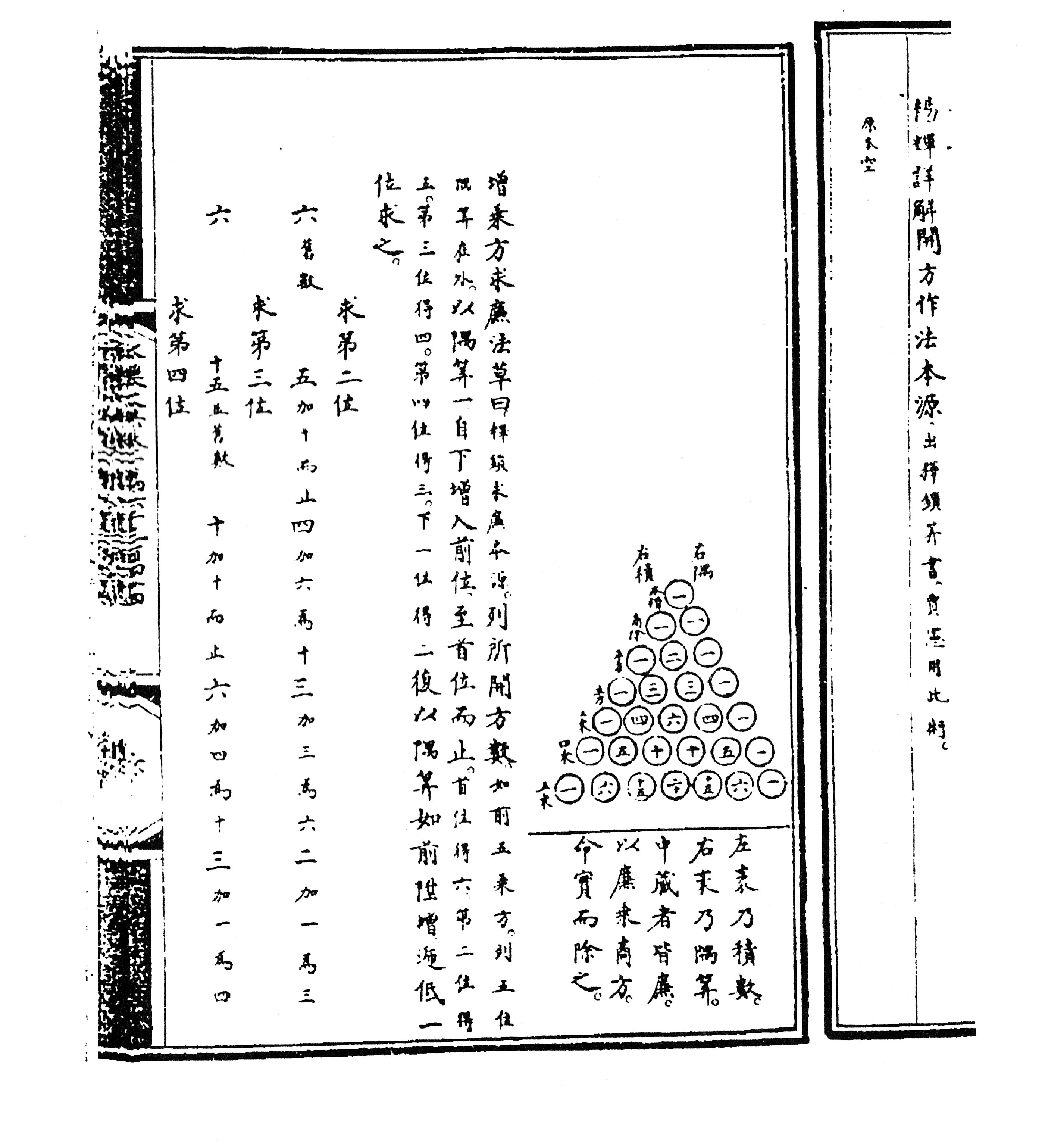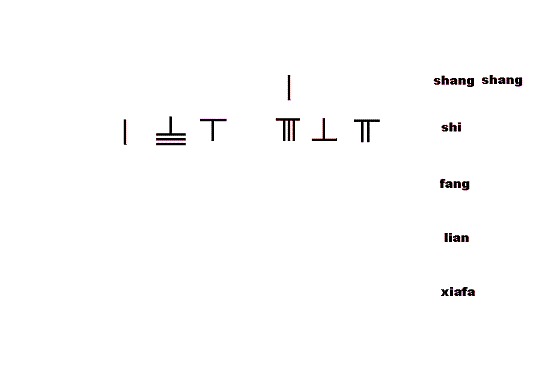Jia Xian on:
[Wikipedia]
[Google]
[Amazon]
 Jia Xian (; ca. 1010–1070) was a Chinese mathematician from
Jia Xian (; ca. 1010–1070) was a Chinese mathematician from


 Jia Xian (; ca. 1010–1070) was a Chinese mathematician from
Jia Xian (; ca. 1010–1070) was a Chinese mathematician from Kaifeng
Kaifeng ( zh, s=开封, p=Kāifēng) is a prefecture-level city in east-Zhongyuan, central Henan province, China. It is one of the Historical capitals of China, Eight Ancient Capitals of China, having been the capital eight times in history, and ...
of the Song dynasty
The Song dynasty ( ) was an Dynasties of China, imperial dynasty of China that ruled from 960 to 1279. The dynasty was founded by Emperor Taizu of Song, who usurped the throne of the Later Zhou dynasty and went on to conquer the rest of the Fiv ...
. He described Pascal's triangle
In mathematics, Pascal's triangle is an infinite triangular array of the binomial coefficients which play a crucial role in probability theory, combinatorics, and algebra. In much of the Western world, it is named after the French mathematician Bla ...
during the 11th century.
Biography
According to the history of the Song dynasty, Jia was a palaceeunuch
A eunuch ( , ) is a male who has been castration, castrated. Throughout history, castration often served a specific social function. The earliest records for intentional castration to produce eunuchs are from the Sumerian city of Lagash in the 2 ...
of the Left Duty Group. He studied under the mathematician Chu Yan, and was well versed in mathematics, writing many books on the subject. Jia Xian described the Pascal's triangle
In mathematics, Pascal's triangle is an infinite triangular array of the binomial coefficients which play a crucial role in probability theory, combinatorics, and algebra. In much of the Western world, it is named after the French mathematician Bla ...
(Jia Xian triangle) around the middle of the 11th century, about six centuries before Pascal. Jia used it as a tool for extracting square
In geometry, a square is a regular polygon, regular quadrilateral. It has four straight sides of equal length and four equal angles. Squares are special cases of rectangles, which have four equal angles, and of rhombuses, which have four equal si ...
and cubic root
In mathematics, a cube root of a number is a number that has the given number as its third power; that is y^3=x. The number of cube roots of a number depends on the number system that is considered.
Every real number has exactly one real cube ...
s. The original book by Jia entitled ''Shi Suo Suan Shu'' was lost; however, Jia's method was expounded in detail by Yang Hui
Yang Hui (, ca. 1238–1298), courtesy name Qianguang (), was a Chinese mathematician and writer during the Song dynasty. Originally, from Qiantang (modern Hangzhou, Zhejiang), Yang worked on magic squares, magic circles and the binomial the ...
, who explicitly acknowledged his source: "My method of finding square and cubic roots was based on the Jia Xian method in ''Shi Suo Suan Shu''." A page from the ''Yongle Encyclopedia
The ''Yongle Encyclopedia'' () or ''Yongle Dadian'' () is a Chinese ''leishu'' encyclopedia commissioned by the Yongle Emperor (1402–1424) of the Ming dynasty in 1403 and completed by 1408. It comprised 22,937 manuscript rolls in 11,095 vol ...
'' preserved this historic fact.
Jia Xian's additive-multiplicative method implemented the "Horner" rule.Jean-Claude Martzloff, ''A History of Chinese Mathematics ''Springer, p142
Additive-multiplicative method of square-root extraction
Additive-multiplicative method of cubic-root extraction
References
Bibliography
*J-C Martzloff, A history of Chinese mathematics (Berlin-Heidelberg, 1997). *J-C Martzloff, Histoire des mathématiques chinoises (Paris, 1987). *B Qian, History of Chinese mathematics (Chinese) (Peking, 1981). * K Chemla, Similarities between Chinese and Arabic mathematical writings I : Root extraction, Arabic Sci. Philos. 4 (2) (1994), 207-266. *S Guo, Preliminary research into Jia Xian's Huangdi Jiuzhang Suanjing Xicao (Chinese), Studies in the History of Natural Sciences 7 (4) (1988), 328 -334. *S Guo, Jia Xian, in Du Shiran (ed.), Zhongguo Gudai Kexuejia Zhuanji (Biographies of Ancient Chinese Scientists) (Beijing, 1992), 472 -479. *R Mei, Jia Xian's additive-multiplicative method for the extraction of roots (Chinese), Studies in the History of Natural Sciences 8 (1) (1989), 1 -8. 11th-century Chinese mathematicians Mathematicians from Imperial China Song dynasty eunuchs Song dynasty science writers Year of birth unknown Year of death unknown {{Asia-mathematician-stub